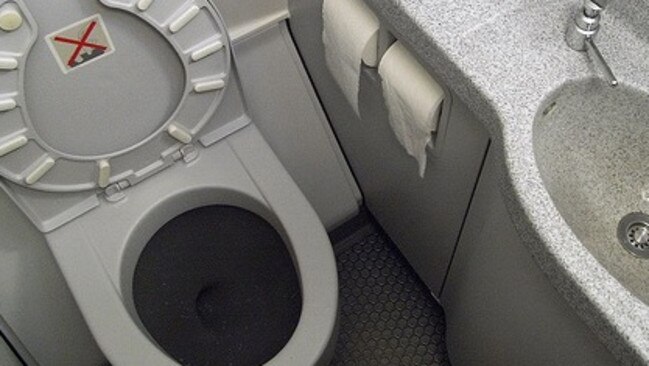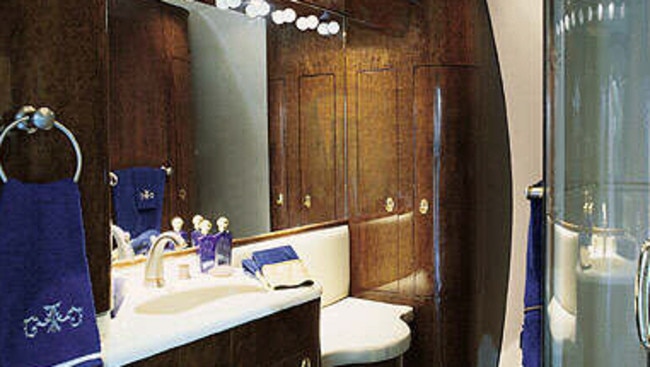That shrinking feeling: You’re not getting bigger, airplane toilets are getting smaller
The ascent of the small plane toilet means cramped air passengers may find busting out of the loo as much of a problem as busting to use it.

Here are the No. 1 and No. 2 problems for many on airlines these days: shrunken bathrooms — especially in economy.
As more planes get fitted with slim lavatories, more passengers are complaining they don’t fit. Twisting and turning is difficult for some. Washing up in a minuscule sink occasionally ends in splashed clothes.
“Airplane bathrooms are a horror show,” says frequent traveller Tad DeOrio. If a flight is under two hours, he now stops drinking fluids an hour before so he can avoid a trip to a washroom.
Perhaps because of traveller discomfort, the airline industry, usually ready with information about new aircraft, is holding on to even simple data like measurements of the new bathrooms. Airlines also don’t publicise a simple tip travellers might want to know: The bathrooms up front, often in first class, are typically larger than the ones in the back for economy passengers.
Boeing Co, which started delivering slim lavs last year, declined to comment or release any dimensions or percentages of airlines taking slim over standard. Boeing referred questions to airlines. Several airlines referred queries to Boeing.
Delta Air Lines responded with a written statement highlighting big overhead bins. The airline said its aircraft with smaller bathrooms — 737-900s and A321s — have “features that customers tell us are more important to them,” like large overhead bins, in-flight entertainment and power ports at every seat.
Rockwell Collins, a maker of lavs for Boeing 737s and other aircraft, said dimensions are proprietary.
Of course, anyone with a ticket and tape measure could get the secret numbers.
So I did. On recent flights, older bathrooms measured about 83 to 86 centimetres wide at chest level, from the mirror on one side to the wall on the other. A new Rockwell Collins lav on a Southwest Airlines 737 measured just 66 centimetres, or about 20 per cent smaller.
A spokesman for Southwest says it hasn’t had measurable complaints about the new loos.
Depending what the airline chooses, some slimmer bathrooms are showing up on new planes. In other cases, smaller restrooms are replacing larger ones on older planes.
That shrinking feeling
Shrink the bathrooms in the front and the rear each by 17.5 centimetres and you’re halfway to an extra row of six seats on a typical narrow-body plane on ultra-low-cost carriers. Additional space savings come from shrinking galleys, removing closets and pushing seats closer together. Another row of seats adds up to tens of millions of dollars in ticket sales over the life of an airplane.
The industry argues that small bathrooms benefit travellers. Shrinking lavs 17.5 centimetres means two additional rows of seats can become extra-legroom rows. Or having an extra row means more people can fly.
Trevor Skelly, a Rockwell Collins vice president, says changes in design give some space back to passengers. One version of the company’s “advanced” bathrooms has a wall that curves in so that seats up against it outside can recline. (Before, the last row typically didn’t recline.)
“I hear the debate, but to me you’re trading off a few minutes in a toilet for five hours in a seat,” Mr. Skelly, says. “You spend a lot more time in the seat than you do in the bathroom, hopefully.”
Slim lavs on the ascent
Airbus launched its version of slim lavs about six years ago after discount airlines pushed for ways to get more seats on planes. Traditional full-service airlines quickly adopted them. Airplane orders with the small lavs are increasing faster than standard lavs, says Roser Roca Toha, Airbus’s aircraft interiors marketing director for the Americas.
The widest Airbus washroom, about 91.5cm to 94cm when measured at floor level, sits in the front of new JetBlue planes, Ms. Roca Toha says. (The lavs are actually a few centimetres slimmer at chest or belt level.) Space-saving lavs, about 12.5cm slimmer at floor level, are used in the rear of JetBlue planes and others.
Slim bathrooms are designed from ergonomic studies to accommodate 95 per cent of American males, Ms. Roca Toha says. That means some portion of the population really doesn’t fit when you combine the Airbus number with Boeing’s slim lavs and tiny bathrooms in small regional jets. And body size isn’t the only obstacle — people with limited mobility can struggle in tight confines.
The first Airbus plane with a slim lav delivered in North America was an A321 to Delta about three years ago. “No one has complained to us,” Ms. Roca Toha says.

Hawaiian Airlines is among those bucking the trend. It says it isn’t using Lilliputian lavs in its new A321s, which typically fly five-hour trips between the islands and the US West Coast.
“We tried out the smaller lav options in mock-ups, but they did not feel like the kind of product we wanted to fly ourselves,” a Hawaiian spokesman says.
American Airlines, later to puny potties than competitors, introduced its first last year on new Boeing 737 MAX airplanes. Pilots and flight attendants complained in meetings with senior executives.
American Chief Executive Doug Parker says the backlash surprised him since the same restroom has been flying on other airlines. Space in the cabin is all a trade-off, he noted. “I’d rather have that 5cm in the cabin as opposed to in the restroom,’’ he says.
Mr. Parker says there were two specific problems the airline has since corrected. Water pressure was too high in the small sink and people got splashed, so American dialled back the pressure. And two lavs across from each other both had solid doors that collided and could trap flight attendants in the aft galley. One door was switched to a bi-fold design that doesn’t open out.
Regulations require bathrooms big enough to accommodate wheelchair-bound passengers on wide-body planes, but not narrow-body. Paralysed Veterans of America filed a lawsuit in July trying to force adoption of narrow-body requirements.
Blaine Stuart is a 188cm, 108kg entrepreneur from Hawaii, bothered by the small lavs flying on United from Los Angeles to Hilo, Hawaii.
“The whole deal is getting super-cramped and uncomfortable,” Mr Stuart says.
“I understand they are trying to maximise profits, but there’s a balance. I don’t think they’ve found it.”
— The Wall Street Journal


